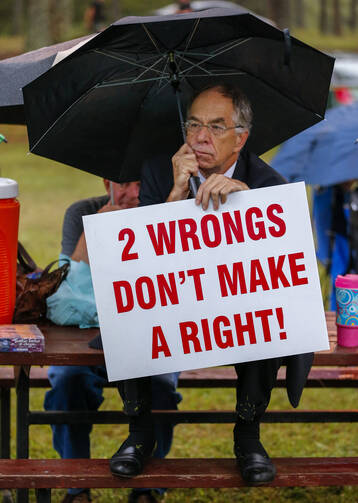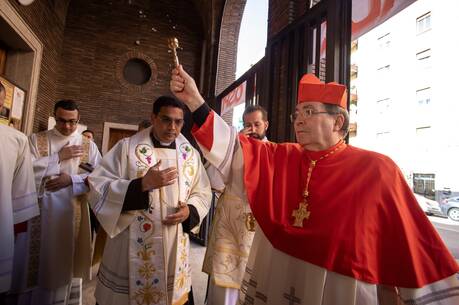The state of California announced on Friday that it has developed a new “humane and dignified” method for executing death row inmates.
Since 2006, there have been no executions in the state, after a judge ruled that the state’s three-drug cocktail could constitute cruel and unusual punishment if one of the drugs failed to work.
Then in February of this year Superior Court Judge Shellyane Chang ruled that the California Department of Corrections and Rehabilitation must provide a method for the execution of death row inmates, in response to the arguments of victims’ families that state law mandates that such a protocol should be in place.
The new protocol will allow officials to choose from one of four different barbiturates for its executions, which should also prevent sentences from being postponed as a result of one drug’s unavailability.
Victims’ families and advocates have long criticized Governor Jerry Brown and Attorney General Kamala D. Harris for dragging their feet on restarting state executions. Even now, executions will resume only after public consideration of the proposal, which includes a 75-day public comment period (30 days longer than the norm for the state), which the L.A. Times predicts could extend a final decision up to a year.
California has 747 inmates on death row, more than the next two states—Florida and Texas—combined. Sixteen have exhausted every option of appeal, including one convicted for crimes that took place over 35 years ago.
The state’s description of its new procedure as “humane and dignified” is clearly an attempt to emphasize the state’s efforts to avoid any question of being cruel or inhumane. The same language has been used in recent years in Florida, Oklahoma and Ohio.
Still, the state’s use of that turn of phrase is also troubling, insofar as it is exactly the same terminology used by assisted suicide advocacy group Compassion and Choice. In fact, the group’s first attempt to legalize euthanasia in the state was called “The Humane and Dignified Death Act.”
Likewise in describing Oregon’s Death with Dignity Act, Compassion and Choices’ website explains the bill would enable terminally ill patients to obtain a prescription “to end life in a humane and dignified manner" (emphasis mine).
The Oregon Death with Dignity Act is one of many documents the state of California has cited as reference material it consulted in coming up with its new policy. When asked if the state’s language had been consciously drawn from that act or the assisted suicide movement, Department of Corrections and Rehabilitation representative Terry Thornton said simply, “What we wrote is our intention,” namely that the state’s procedures would be humane and dignified.
It would be going too far to say that the state’s new execution protocols coming on the heels of its passed euthanasia legislation necessarily indicate the kind of slippery slope that the church and others have repeatedly warned will come with assisted suicide. By all accounts the state has shown real reluctance to restart its executions; a state ballot to repeal the death penalty narrowly failed 52 to 48 percent in 2012, and there is a move afoot to put the question to voters again in 2016.
Still, there is also danger that this choice of language casts executions in a similarly reassuring, “it’s better this way” kind of light. Responding to queries from America about the state’s proposal, the California Catholic Conference issued a statement saying, “The proposed regulations are part of an ongoing legal effort to ‘fix’ the ‘cruel and unusual’ aspect of the death penalty. It can’t be fixed.”
The C.C.C. also promised to speak out against the proposal during public hearings, as it has before. “The bishops are committed to a restorative justice model in which we as a society care for victims, the incarcerated, their families and all those impacted by the criminal justice system. Pope Francis made it very clear in his address to the U.S. Congress in September when he spoke of his and the church's commitment to end the death penalty around the world.”








